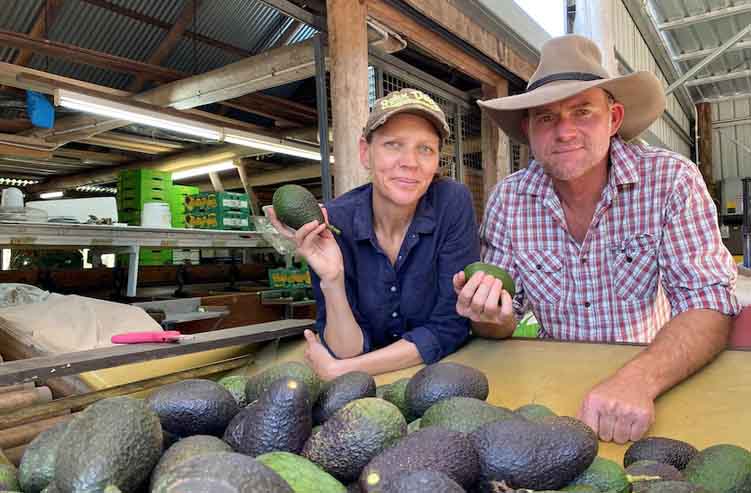Source: ABCnews
A pair of Sunshine Coast farmers say they have no choice but to watch their avocados die on trees as Australian growers battle with a market oversupply.
Production has doubled in the past decade as farmers cash in on the nation’s appetite for the fruit, leading to smaller growers being priced out of the market.
Wolvi farmers Julie and Tony Pratt have had to make some difficult decisions after making a profit of just 4 cents per avocado on a recent delivery to a major Queensland market.
They say letting their produce rot is now the most economical decision.
“We know you shouldn’t do it, [but] we don’t have a choice,” Mr Pratt said.
“We just will pack out for the orders we’ve got, but you can’t send fruit to the market and get nothing for it.”
The couple bought their 1,000-tree property four years ago and were anticipating 2021 to be their strongest season.
It has been their worst.
“One dollar an avocado [in the supermarket means] all farms are losing money — doesn’t matter whether you’re a small family farm or a corporate farm,” Mr Pratt said.
“What really hurts is when you see that fruit not coming from Australia.
“It makes it pretty hard to get up the next morning and start up irrigation pumps to prepare for the next crop.”
The season would usually end in September in the Gympie region, but the Pratts still have fruit on trees after taking a risk and waiting to see whether supermarket prices would rise.
The gamble did not pay off.
“Because of the sheer volume on the market, there’s close to half a million trays a week coming onto the market from various parts of Australia,” Mr Pratt said.
Money not growing on trees
Avocados Australia chief executive John Tyas said more trees coupled with a good growing conditions had significantly increased market supply.
“This year we’re seeing a massive increase in production with a lot of young plantings coming online,” he said.
Last year the nation’s growers produced almost 90,000 tonnes, but Mr Tyas said 120,000 tonnes would be produced in the next year.
Industry representative Hort Innovation launched an advertising campaign in June to increase demand for the rapidly growing supply.
Marketing manager Matthew Dwyer said oversupply was the industry’s biggest challenge.
“What we want to do is ensure that consumers know the value of the product,” he said.
He said the advertisement was a success — after four months, research showed two out of three consumers were more likely to buy avocados.
Call for locals to support their own
The Pratts turned to selling their crop on social media for the first time to survive the season.
“We’ve had to ramp it up a notch and go direct to consumer through our social media and we’re still getting rid of some fruit through there, but not enough,” Mr Pratt said.
They also had family members manning roadside stalls, which Mr Pratt never imagined they would have to do.
“We just need to shift more volume and it’s a lot more work,” he said.
But with production increasing at a rapid rate, Mr Pratt said there was no light at the end of the tunnel.
“If you look at a lot of these big farms, whether that’s in North Queensland, Central Queensland — these are guys that have planted thousands of trees,” he said.
“It’s the first year that those farms are getting any yield from those first few plantings.
“So it’s not going to get better anytime soon … if we all keep on doing the same thing, which is sending fruit to the market, you’re going to get the same result.”
Mrs Pratt urged consumers to buy locally grown fruit.
“We have to share our stories for them to understand that they need to put their money where their mouth is and go, ‘Right I’m spending, I’m making the choice to spend at my local fruit and veggie shop’,'” she said.


